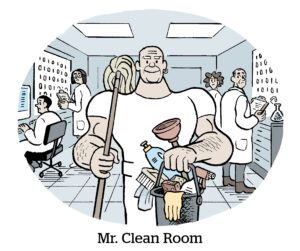Tired of reading countless headlines about data interoperability?
Too bad, because inventory fragmentation on connected TV (CTV) is still causing seemingly unavoidable hurdles for cross-platform campaigns and ad repetition for TV viewers.
On Wednesday, Roku and Comcast-owned FreeWheel expanded their partnership in the name of data collaboration.
Roku has already been working with FreeWheel for audience-based targeting. Now, Roku will be able to see programmers’ full inventory from across their portfolios in FreeWheel’s TV tech platform that includes its supply-side platform, which should light up other channels where ads are being duplicated. FreeWheel will also use Roku’s clean room to match publisher first-party data with Roku device IDs, in addition to implementing Roku’s latest fraud detection watermark.
A programmatic peek
The idea is to streamline the process of selling Roku ad inventory. Previously, ad sales teams would deal with Roku and other distributors separately to track ad requests and impression delivery, which made it “quite manual and hectic,” Youssef Ben-Youssef, Roku’s senior director of technology partnerships, told AdExchanger.
Interoperability is something Roku programmers have requested for a long time, Ben-Youssef said. And by integrating directly into FreeWheel’s TV platform, which is the default for many major TV programmers, Roku can advise advertisers on ad placements based on a programmer’s full catalogue of available inventory from competing distributors. Roku is putting this information in its demand API, an in-house tool it uses to manage inventory agreements with publisher clients.
Publishers plugged into the API can now relay a better sense of inventory availability to advertisers in real time, Ben-Youssef said. Plus, a direct pipeline into FreeWheel should bring incremental new demand for publisher clients.
This integration is live as per Wednesday’s announcement, though FreeWheel’s usage of Roku’s clean room and watermark are still in development. Roku expects those integrations to be publicly available in 2024.
Roku’s clean room is the necessary next step for making ad sales more efficient, according to Ben-Youssef, because it allows for more data matching in a privacy-friendly fashion.
Using Roku’s clean room, FreeWheel will be able to match first-party data from its publisher clients with Roku device IDs to link ad exposures to specific audiences.
Repetitive and back-to-back streaming ads annoy viewers and drive down both return on ad spend and inventory yield. From an advertising perspective, having additional direct pathways to a seller’s inventory gives buyers more control over frequency capping and media quality, said Soo Jin Oh, FreeWheel’s chief strategy officer.
The partnership expansion with Roku’s clean room also comes on the heels of FreeWheel’s Viewer Experience Lab, which it launched last month with MediaScience. The lab is currently testing how viewers respond to different ad experiences, including ad load and repetition.
FreeWheel will also use Roku’s revamped watermarking technology, which detects app and audience ID spoofing. According to Ben-Youssef, the watermark is now mandatory for all programmers looking to distribute content on Roku.
The through line is data interoperability, Oh said. Without it, programmers cannot “solve for the issues that fragmentation creates” for CTV campaigns.















